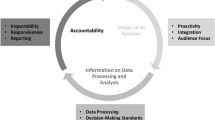Abstract
The human–computer interaction (HCI) system is one of the state-of-art consolidations of intellectual psychology and computer automation technology in the recent era. An organized HCI focuses on designing intelligent and competent processing systems for interaction through human–reciprocation. Processing efficiency and computational precision of intelligent systems unambiguously rely on user interfaces. The improper access to user interfaces results in error-prone responses and hence the computation increases in account of better accuracy. In this manuscript, the self-adaptive error detection (SAED) automation method is introduced for leveraging the computation precision of HCI systems. SAED harmonizes a bi-linear learning process based on Bayes classification subsided by a cumulative distribution function (CDF). CDF defines the maximum error unleashing probability of the inputs to recognize certain computations. Bayes classification regresses the decisive computation as a reference to classify inputs by detaining errors to provide more relevant suggestions as a part of automation. SAED results in non-trivial input processing to enhance the choice of HCI integrated into intelligent computing systems. This method focuses on improving the prediction of inputs by reducing error, computation time, and memory overloading. The errors and memory overloading due to improper and partially classified inputs and convergence are thwarted using this method. The specular conduct of SAED is gauged using experimental modeling and error detection rate, predicted inputs, and distribution function metrics are analyzed. The proposed method is found to achieve 13.61% less completion time, 5.63% less error, and 19.29% less memory consumption, respectively.











Similar content being viewed by others
References
Sanz-Robinson, J., Moy, T., Huang, L., Rieutort-Louis, W., Hu, Y., Wagner, S., et al. (2017). Large-area electronics: A platform for next-generation human–computer interfaces. IEEE Journal on Emerging and Selected Topics in Circuits and Systems, 7(1), 38–49.
Mohamed, S. R., & Raviraj, P. (2020). Optimisation of multi-body fishbot undulatory swimming speed based on SOLEIL and BhT simulators. International Journal of Intelligence and Sustainable Computing, 1(1), 19.
Li, M., Wei, J., Zheng, X., & Bolton, M. L. (2017). A formal machine-learning approach to generating human–machine interfaces from task models. IEEE Transactions on Human–Machine Systems, 47(6), 822–833.
Quintas, J., Martins, G. S., Santos, L., Menezes, P., & Dias, J. (2019). Toward a context-aware human–robot interaction framework based on cognitive development. IEEE Transactions on Systems, Man, and Cybernetics: Systems, 49(1), 227–237.
Aydin, Y., Tokatli, O., Patoglu, V., & Basdogan, C. (2018). Stable physical human–robot interaction using fractional order admittance control. IEEE Transactions on Haptics, 11(3), 464–475.
Ke, Q., Bennamoun, M., An, S., Sohel, F., & Boussaid, F. (2018). Leveraging structural context models and ranking score fusion for human interaction prediction. IEEE Transactions on Multimedia, 20(7), 1712–1723.
Mukherjee, D., & Reddy, B. V. R. (2020). Design and development of a novel MOSFET structure for reduction of reverse bias pn junction leakage current. International Journal of Intelligence and Sustainable Computing, 1(1), 32.
Thenkumari, K., & Sakthidasan, K. (2019). Frequency reconfigurable micro strip antenna switching techniques for sustainable environment. Journal of Green Engineering, 9(4), 1814–1820.
Xu, Z., Wang, R., Yue, X., Liu, T., Chen, C., & Fang, S. H. (2018). FaceME: Face-to-machine proximity estimation based on RSSI difference for mobile industrial human–machine interaction. IEEE Transactions on Industrial Informatics, 14(8), 3547–3558.
Shen, C., Chen, Y., Liu, Y., & Guan, X. (2018). Adaptive human–machine interactive behavior analysis with wrist-worn devices for password inference. IEEE Transactions on Neural Networks and Learning Systems, 99, 1–11.
Yan, Z., Duan, N., Bao, J., Chen, P., Zhou, M., & Li, Z. (2018). Response selection from unstructured documents for human–computer conversation systems. Knowledge-Based Systems, 142, 149–159.
Domínguez, C., Martínez, J. M., Busquets-Mataix, J. V., & Hassan, H. (2018). Human–computer cooperation platform for developing real-time robotic applications. The Journal of Supercomputing, 75, 1849–1868.
Ehrenbrink, P., & Möller, S. (2018). Development of a reactance scale for human–computer interaction. Quality and User Experience, 3(1), 1–13.
Wu, X., Wu, C., Wei, D., & Xiao, Y. (2019). Alternative computer mouse trigger designs in computerized physician order entry (CPOE) system to reduce clinicians’ drop-down menu selection errors. International Journal of Industrial Ergonomics, 71, 14–19.
Ding, Z., Qiu, H., Yang, R., Jiang, C., & Zhou, M. (2019). Interactive-control-model for human–computer interactive system based on petri nets. IEEE Transactions on Automation Science and Engineering, 16(4), 1800–1813.
Vojtech, J. M., Cler, G. J., & Stepp, C. E. (2018). Prediction of optimal facial electromyographic sensor configurations for human–machine interface control. IEEE Transactions on Neural Systems and Rehabilitation Engineering, 26(8), 1566–1576.
Zhang, S., & Zhang, S. (2019). A novel human–3DTV interaction system based on free hand gestures and a touch-based virtual interface. IEEE Access, 7, 165961–165973.
Zeng, Q., Jiang, B., & Duan, Q. (2019). Integrated evaluation of hardware and software interfaces for automotive human–machine interaction. IET Cyber-Physical Systems: Theory & Applications, 4(3), 214–220.
Jiang, J., Wang, Y., Zhang, L., Wu, D., Li, M., Xie, T., et al. (2018). A cognitive reliability model research for complex digital human–computer interface of industrial system. Safety Science, 108, 196–202.
Author information
Authors and Affiliations
Corresponding author
Ethics declarations
Conflict of interest
The authors declare that they have no conflict of interest.
Additional information
Publisher's Note
Springer Nature remains neutral with regard to jurisdictional claims in published maps and institutional affiliations.
Rights and permissions
About this article
Cite this article
Krishnan, S., Vaithyasubramanian, S. & Maragatharajan, M. SAED: Self-adaptive Error Detection Automation for Leveraging Computational Efficiency of HCI Systems. Wireless Pers Commun 117, 3289–3307 (2021). https://doi.org/10.1007/s11277-020-07988-7
Published:
Issue Date:
DOI: https://doi.org/10.1007/s11277-020-07988-7




